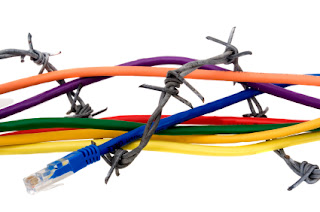With organizations having complex documentation requirements, printers as peripherals end up bearing maximum of stress. Leading to a strong reason as to why various manufacturers need to offer printer security as a part of the overall deal. In the bargain saving enterprises from the hassle of purchasing exorbitantly priced security solutions separately. So, if you are also thinking of buying a printer, just read on and get a good understanding of what various brands have on offer and how secure they are.
Canon
Canon with its wide range of built-in and optional hardware features and software ends up addressing print security requirements for businesses of all sizes. Canon’s security proposition ends up offering capabilities such as user authentication, usage auditing and reporting. Among all the notable features, the printer’s keyword recognition feature comprises of optical character recognition (OCR) and a unique uniFLOW technology to prevent any sort of unauthorized copy, fax or scan jobs taking place on Canon and any other third party devices. To further maximize the security, jobs can be held and checked for restricted content before they are printed or sent to their scan destination.
HP
HP boasts of a strong portfolio to help businesses manage risk and secure their print infrastructure. Established over a time span of 10 years, the organization’s Imaging and Printing Security Framework has been found on the four pillars of secure data, secure devices, well-protected printed documents, and extensive monitoring and management of printing fleet. The organization has further augmented the same framework by adding risk management and compliance considerations inclusive of features such as authentication, rules-based printing, job accounting and secure pull printing.
Konica Minolta
In Konica Minolta’s overall strategy, security is considered as a key element. The company has a comprehensive range of print and document security features considered to be a standard amongst its biz hub range of devices. Offering bizhub SECURE, a professional security service providing lock down protection on bizhub MFPs (Multi Function Peripherals), the gamut of services appeal to many enterprises given the complex mix of MFP hardware and software security features any business environment demands. In the same instance helping Konica Minolta raise its print security offerings well beyond its standard hardware features and duly support an OPS-led approach.
Lexmark
Lexmark with its message of “Print Less, Save More,” to quite a large extent ends up addressing the business requirement of saving money in the present economic scenario. With the services portfolio of the company comprising of pull-printing, device personalization, activity tracking and reporting, Lexmark does well to authenticate devices across locations, branches and country offices. Further, by virtue of developing and owning its own core technologies, Lexmark is able to deliver a strong set of innovative solutions for a secure and cost-effective print infrastructure.
Ricoh
Security is considered to be inherent in any hardware, software and other services offered by the company. Ricoh provides a comprehensive range of advanced security solutions comprising of authentication, secure server-less pull-printing, document management and audit and reporting features. Ricoh is wisely focusing on assessing business security needs rather than presenting a complex array of hardware and software product features.
Xerox
The development, implementation and delivery of all Xerox products, services and technologies end up focusing on network security, document security, data security and authentication. Xerox builds a comprehensive range of features into its devices to help safeguard customer information, including hard drive removal, fax/network separation, image overwrite, network authentication and authorization, encryption and secure print. Ring and Grab Major Printer Support at +1-855-877-5848, http://www.pccare247.com/printer-support.html





